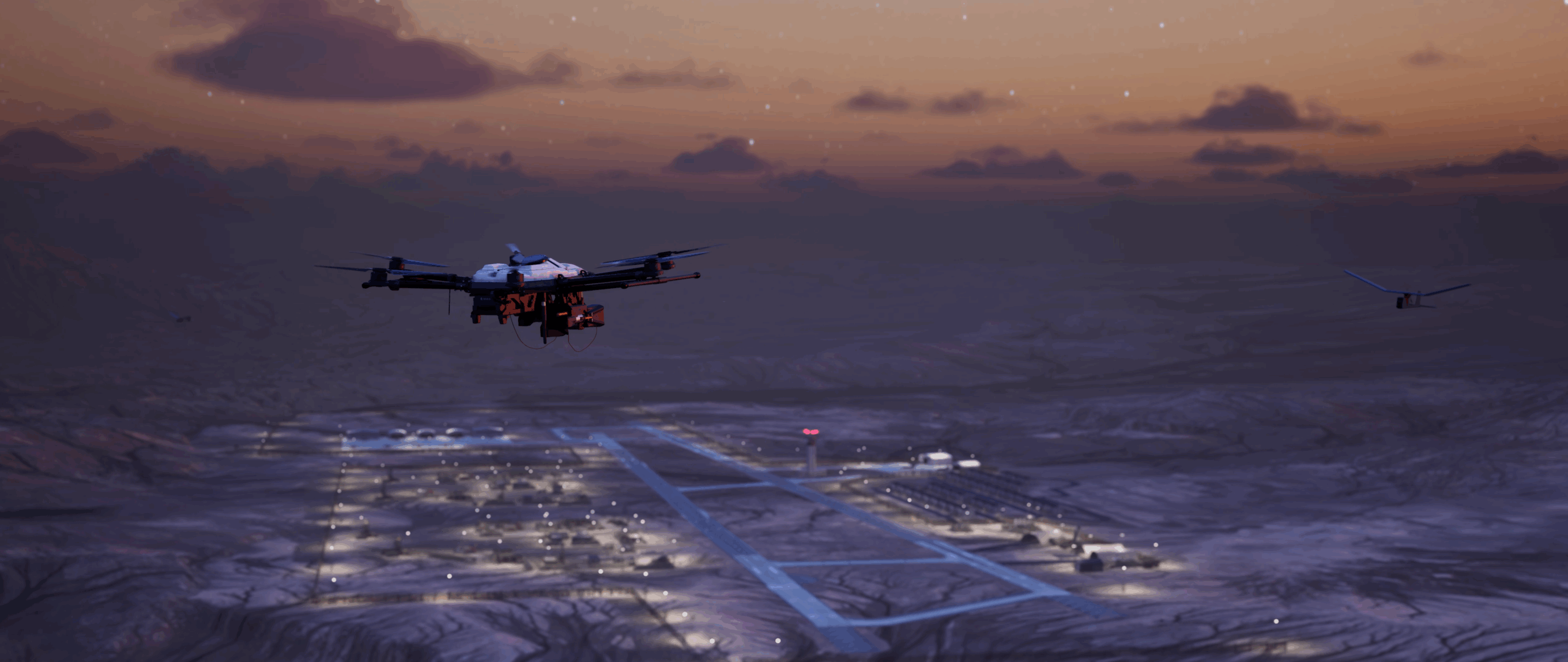
Imagine you’re standing watch on a military base’s security forces team, monitoring for potential air threats. Your radar screen is cluttered with tracks – commercial aircraft, flocks of birds, and civilian and commercial drones. You see what looks like a small aircraft veering towards your fence line.
Is that a threat? A delivery drone flying off course? A hobbyist drone operator snapping a picture of a sunset? Or is it an AI-trained distraction while the real threat masks its approach from another direction?
Drones already present a formidable challenge for military and homeland security forces. AI-guided drones could be a nightmare, using advanced tactics to hide their movements or coordinate swarming attacks custom-designed to overwhelm defenses.
The good news? AI is uniquely suited to powering exceptional drone defenses. Here’s how:
Learning algorithms are excellent at spotting and tracking drones: In a noisy or cluttered radar environment, drones could slip through cracks in sensor detection. But AI can be trained specifically to separate signal from noise in a given environment.
An AI-powered system can become an expert in the area around a military base, for example, learning the local landscape, structures, and even weather patterns so it knows how to pick out and track drone anomalies with exceptional accuracy.
AI can match defensive weapons to drone targets much faster than humans: Once the drone is spotted, a counter-UAS system has to know how to best determine intent and to plan for mitigation. But that depends on many complex factors. Is the drone carrying explosives? Is it vulnerable to a cyber or electronic attack? Could a laser take it down safely?
For operators in a command center, making those decisions from a dozen or so football fields away can cost precious minutes. But an AI algorithm can be trained to recognize and evaluate different drone threats in an instant, evaluating its weaknesses and capabilities to quickly find and recommend the best way to maintain safety and sovereignty. It can also be trained on policy and rules of engagement to know which responses best align to regulations, assisting operators in a complex data rich environment.
AI might be the only way to move fast enough to repel a drone swarm: In a large swarm scenario, human operators can be quickly overwhelmed. A well-trained AI system, governed by robust safety protocols, could take over defenses, rapidly prioritizing and engaging drones to stave off a powerful assault. Such a defense would require layering offensive and defensive tactics, a feat only an AI-powered system could likely pull off.
Building an Intelligent Counter-UAS Network
Sanctum™, Lockheed Martin’s Counter-UAS system, is proving out those AI-driven capabilities in joint exercises worldwide. From precision tracking and targeting to real-world takedowns of drone threats, Sanctum is demonstrating the power of smart, layered defense.
Sanctum is customized for each deployment, using a combination of layered defensive systems and a core AI mission management system that is trained to detect drones in cluttered environments, track them with confidence, and identify the level of threat they pose. The system then recommends the ideal weapon-target pairing to take them out quickly and safely.
Sanctum’s AI is a learning algorithm. What Sanctum sees in one location trains the system everywhere. When Sanctum tracks a new threat or recognizes a different UAS behavior, it shares those updates across the network. That makes each node smarter, and helps keep Sanctum-equipped defenses ahead of the threat.
That software is built on the same Lockheed Martin-designed air and missile defense technology like the Aegis Combat System that’s countering drone and cruise missile threats in places like the Red Sea. From sensors and sensor fusion to automated weapon-target pairing and precision intercepts, these technologies are battle-tested, not just beta-tested.
We combine that AI mission management brain with a mix of the top-performing sensors and effectors from across the commercial and defense tech industry. Sanctum’s open architecture means there’s no vendor lock and no requirement to use Lockheed Martin tech. Each defensive network is built for what the mission needs, from software to sensors to shooters. And as new innovations come online, Sanctum can integrate new tech with ease.
The result is a system that’s custom-designed and diligently trained to defend each unique location. That delivers more effective security, with better chances of seeing and stopping drones in their tracks without risking the safety of a base or the surrounding area.
Sanctum gives operators a decisive edge over a rapidly evolving drone threat.
Paul Lemmo is the Vice President and General Manager of Integrated Warfare Systems and Sensors at Lockheed Martin.



